The National Cuisine of Ukraine and Great Britain
Чередніченко Ю.М. План-конспект уроку англійської мови в 10 класі на тему: "Національна кухня України та Великобританії". Розробка уроку спрямована на удосконалення навичок володіння мовленнєвою діяльністю за темою «Національна кухня», систематизування комунікативних навичок індивідуальної роботи; удосконалювати навичок аудіювання; практикування навичок вживання підрядних речень умови другого типу на письмі та в усному мовленні.
P.S. презентація до уроку знаходиться на моїй сторінці під назвою: "Національна кухня України та Великобританії"
План-конспект
відкритого комбінованого уроку англійської мови в 10 класі
Тема: «Національна кухня України та Великобританії»
Topic «The National Cuisine of Ukraine and Great Britain» (слайд №1)
Цілі:
Практична: удосконалювати навички володіння мовленнєвою діяльністю за темою «Національна кухня», систематизувати комунікативні навички індивідуальної роботи; удосконалювати навички аудіювання; практикувати навички вживання підрядних речень умови другого типу на письмі та в усному мовленні.
Освітня: розширити знання кадетів про страви України та Великої Британії.
Розвивальна: розвивати пізнавальний інтерес кадетів; розвивати мовну здогадку та мовленнєву реакцію учнів; розвивати вміння викладати свою думку.
Виховна: виховувати культуру спілкування; прищеплювати морально-етичні норми поведінки; виховувати повагу до традицій українського народу та інтерес до кухні різних країн; патріотичне виховання.
Objectives
to develop cadets’ individual communicative skills; to improve cadets’ listening skills; to practise grammar skills; to evoke curiosity and interest to the national Ukrainian and British cuisine; to develop cadets’ quick reaction and ability to select necessary words; to develop cadets’ cognitive and creative skills; patriotic education.
Materials: multimedia board, cards with individual tasks, video and audio files.
Time: 45 minutes
PROCEDURE
- Greetings. Introductory notes
Teacher: The topic of our today’s lesson is “Ukrainian and British Cuisine”. At the lesson you will develop your individual communicative skills; improve your listening skills; practise your grammar skills; evoke your curiosity and interest to the national cuisine of Ukraine and Great Britain. Thus, we are going to discuss the peculiarities of mealtimes in different countries, and as for the grammar, we will revise the 2nd Conditionals and practise in their usage. (слайд №2) Before getting down to work I would like you to wake up your tongues, just to practise some sounds. So, let’s have phonetic drill. We are going to practise sound [p] which is pronounced with aspiration. I want you to take the sheets of paper that you can see in front of you. Put them in front of your lips and pronounce sound [p]. If the paper moves, you pronounce the sound correctly. Everyone managed to fulfill the task. Now let’s listen to the tongue twister, called Peter Piper. (аудіозапис)
Peter Piper picked a peck of pickled peppers
A peck of pickled peppers Peter Piper picked
If Peter Piper picked a peck of pickled peppers
Where's the peck of pickled peppers Peter Piper picked?
- Main Part
Teacher: Look at the blackboard. I’d like to pay your attention to the English proverb that is written here «Every cook praises his own broth», translate it and find the Ukrainian equivalent. Let it be the motto of our lesson. So, let’s praise the Ukrainian and British cuisine. You know that every country has its own cuisine and what is more some popular dishes are associated with this or that national cuisine. Before dwelling upon such an interesting topic, let’s brush up your active vocabulary.
 Language focus: vocabulary practice (Mind map). (слайд №4)
Language focus: vocabulary practice (Mind map). (слайд №4)


![]()


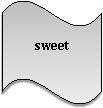
![]()
![]()





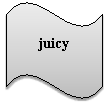
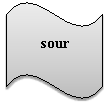
![]() Quiz time
Quiz time
- I have put a slice of lemon into my tea. It’s sour.
- You have put too much salt into it. It is salty.
- I’ve added too much pepper in borshch and it tastes bitter.
- I have put some sugar into uzvar. It is sweet.
- This dish smells delicious.
- There is much juice in oranges. They are juicy.
Going over homework. Speaking
Teacher: Your homework for today was to learn information about Ukrainian cuisine. Let’s check it up. I’ve prepared some questions for you. Try to answer them. (слайд №5)
- Why do Ukrainians like eating Ukrainian traditional food?
Possible answer: Ukrainians like eating traditional food because it is cooked of fresh products, grown without any chemicals, it has natural taste and it is good for health.
- What is Ukrainian cuisine known for?
Possible answer: Ukrainian cuisine is famous for its variety of dishes. Everyone knows about Ukrainian dumplings or varenyky with all kinds of fillings, about golubtsy or famous Ukrainian borshch with sour cream or without it.
- What does Ukrainian breakfast consist of?
Possible answer: In Ukraine breakfast usually consists of a cup of tea, coffee or milk; some sandwiches, boiled or fried eggs. For a change we can have meat or cereal with milk and sugar.
- What time do we usually have dinner? What courses does it consist of?
Possible answer: Ukrainian dinner is a principal meal of the day. We usually have it at about 1 or 2 in the afternoon. Dinner traditionally consists of 3 courses; any soup, broth or borshch for a starter, boiled, mashed or fried potato with roast meat or chicken. Dessert consists of cakes, pastry, pies with tea, coffee or stewed fruit.
- What is the last meal of the day? Does it differ in various families?
Possible answer: The last meal of the day is supper. It differs in various families. Some people prefer light supper for others it is a substantial meal. It may consist of an omelette and sausages, eggs and sandwiches, vegetables and fruit.
Presentation of new information. Listening comprehension
Pre-Listening Activity
What do you know about Traditional British food?
Dictionary work (слайд №6)
Nowadays in spoken English you can often come across such a phrase as convenience food. Read how convenience food is defined in some English dictionaries and then give examples of these kinds of food (cans, cookies, pizza, potato chips, and frozen food).
Convenience food - food so prepared and presented as to be easily and quickly ready for consumption (споживання).
Convenience food - a complete meal which requires minimum further preparation.
Convenience food- food that is almost ready to eat when it is bought and can be prepared quickly and easily.
While-listening activity (Відеозапис №1)
After-listening activity
![]()
![]() Answer the questions: Q A (T P) (слайд №7)
Answer the questions: Q A (T P) (слайд №7)
- Who brings milk to people’s houses?
- What is the usual meal for breakfast?
- What is the traditional meal for breakfast?
- When do the British people have their lunch?
- What do they have for lunch?
- When do they have their dinner?
- What is the main dish for dinner?
- What foreign restaurants are there popular in Britain?
- What do British teenagers like or dislike?
- What is the traditional British food?
Reading Comprehension (слайд №8)
Pre-reading task
Teacher: Look at the title of the text. What do you expect to read in the text? If Ukrainians think of delicious cuisine, the English think of good table manners.
While-reading
What Should I do or not Do When I am Eating
The British generally pay a lot of attention to good table manners. Even little children are expected to eat properly with a knife and a fork.
In Britain people eat most of their food with cutlery. The foods they don’t eat with a knife, fork or spoon include sandwiches, crisps and fruit.
If you cannot eat a certain type of food or have some special needs, 1) ___D______.
If you are a guest, it is polite to wait until 2) _____F_______. It shows consideration. Always chew and swallow all the food in your mouth 3) ____G_____.
Always say “thank you” when you are served with something. It shows appreciation. You may eat chicken pizza 4) ____E_______ if you are at a barbecue, finger buffet or very informal setting. Otherwise always use a knife and a fork.
5) ___A________, break off piece of bread before buttering. On formal dining occasions it is a good manner to take some butter from the butter dish with your bread knife and 6) _____C
______. Then butter pieces of the roll using this butter. In a restaurant, it is normal to pay for your food 7) ____B__________ the bill comes on.
When you have finished eating, and to let others know that you have, place 8) ______C______, when the tines on the fork facing upwards, on your plate.
- When eating rolls
- by putting your money on the table
- your knife and fork together
- tell your host several days before the dinner party
- with your fingers
- your host starts eating or indicates you should do so
- before taking more or taking a drink
- put it on your side plate (for the roll)
After-reading activity
Teacher: You have read the text about table manners in Great Britain and now I want you to watch a video about table manners. Please be attentive because after watching you will have to complete the task. Teacher: And now with the help of a picture I would like you to make up a list of Do’s and Don’ts. (слайд №9) After watching you will make a list of do’s and don’ts. (Відеозапис №2)
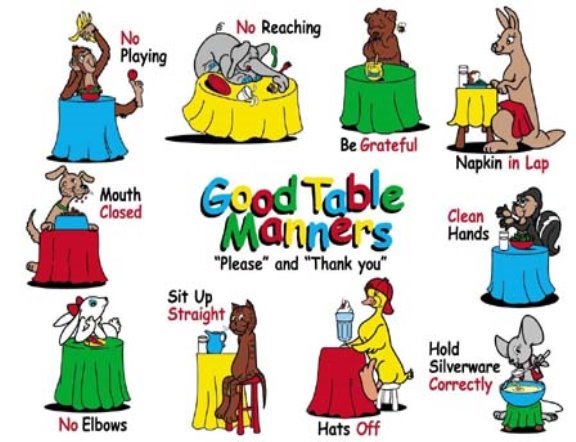
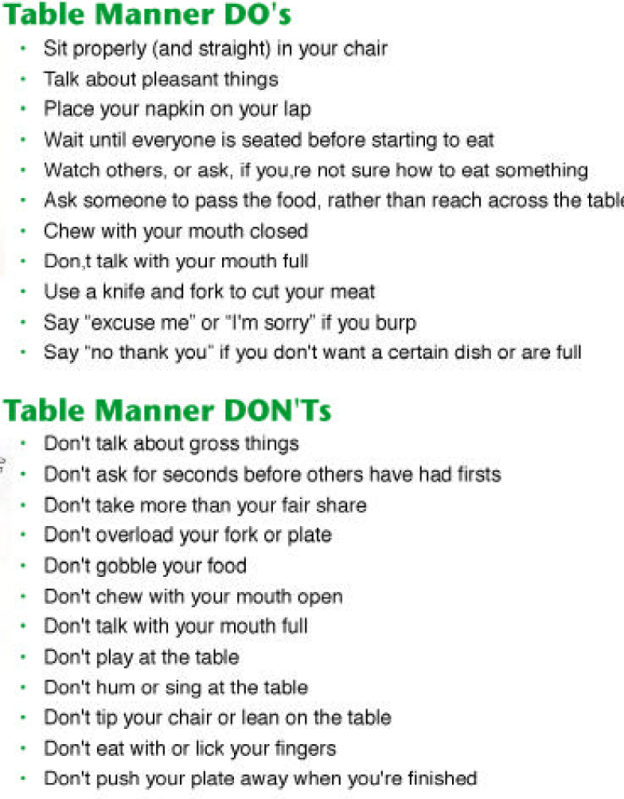
Teacher: You have listed some table manners. Say which of them you always follow and which you do not. Use the model: (слайд №10)
I always follow such table manners as…
I sometimes break (do not follow) such table manners as…
Teacher: If there were no table manners, what do you think would happen?
Possible answer: If there were no table manners, people would not be polite; there would be a mess in the world; people would not be able to use the cutlery; people would not know what etiquette is.
Grammar Revision
We have learnt some grammar structures. I’d like to propose to make up the chart. We have already had some information, so you should complete the chart
(На дошці)
|
Conditionals, 1st |
If+Pr.S.+will+V |
|
Conditionals, 2nd |
If+Past S.+would/could+V |
Grammar practice
Individual task: I have some individual cards with sentences. I have a magic box where there are some sheets of paper with the sentences. You are to pull one out and write it in the correct form down into your copy-books.*
1. If you phone me in the evening, I’ll explain everything to you.
2. If Michael wears dirty shoes again tomorrow, I’ll beat him up!
3. If you learn English, you’ll go abroad.
4. If I have a license, I‘ll drive a car.
5. If she passes her exams, she will enter a university.
6. If I study well, I’ get a well-paid job.
7. If he practices every day, he will become a champion.
8. She will help us if we ask.
9. If they have enough money, they will open a restaurant next year.
10. I won’t talk to you anymore if you insult me.
11. If Bob doesn’t keep his word, Anna will be angry with him.
12. If pupils work harder, they will have good results.
13. If children know the rules of behavior, they will be polite.
- Summary
So we spoke a lot about Ukrainian and British cuisine. I want you to tell just several words about your favourite dish. Your answer must contain the name of the dish and some ingredients it consists of.
Home task
I have surprise for you. A friend of mine is From Great Britain and he sent us a video letter. Let’s watch! (Відеозапис №2) So, your homework for the next lesson is:
- повторити лексико – граматичний матеріал теми «National Cuisine»;
- підготувати доповідь про традиційну їжу Великобританії;
- написати листа другові про українську кухню та улюблену страву* (слайд №11)
Take an evaluation card and make a self-assessment. Circle a mark you deserve from your point of view. Give your card back and next time we will discuss how they correspond to your actual work. (слайд №12)
|
Evaluation card
|
||||
|
|
Excellent |
Very good |
Good |
Not very good |
|
Fluency |
|
|
|
|
|
Accuracy |
|
|
|
|
|
Participation in the lesson |
|
|
|
|
And now it’s high time to finish our lesson. I think it’s interesting for you to know your marks. So you received such marks: (повідомлення і обґрунтування оцінок).
The lesson is over. You may be free. Bye!
|
Evaluation card
|
||||
|
|
Excellent |
Very good |
Good |
Not very good |
|
Fluency |
|
|
|
|
|
Accuracy |
|
|
|
|
|
Participation in the lesson |
|
|
|
|
|
Evaluation card
|
||||
|
|
Excellent |
Very good |
Good |
Not very good |
|
Fluency |
|
|
|
|
|
Accuracy |
|
|
|
|
|
Participation in the lesson |
|
|
|
|
|
Evaluation card
|
||||
|
|
Excellent |
Very good |
Good |
Not very good |
|
Fluency |
|
|
|
|
|
Accuracy |
|
|
|
|
|
Participation in the lesson |
|
|
|
|
|
Evaluation card
|
||||
|
|
Excellent |
Very good |
Good |
Not very good |
|
Fluency |
|
|
|
|
|
Accuracy |
|
|
|
|
|
Participation in the lesson |
|
|
|
|
Технологічна карта уроку
І. Початок уроку.
- Організація класу. Бесіда з черговим. Повідомлення теми та практичної мети уроку.
- Фонетична зарядка (відпрацювання звуку [п], використовуючи скоромовку).
ІІ. Основна частина уроку.
- Актуалізація опорних знань.
- Повторення лексичного матеріалу.
- Тренування навичок усного монологічного мовлення (перевірка домашнього завдання за допомогою бліцопитування).
- Словникова робота.
- Тренування навичок аудіювання (перегляд відеофільму «Традиційна їжа Великобританії»).
- Виконання завдань на розуміння побаченого та почутого.
- Тренування навичок читання (робота з текстом «Правила поведінки за столом).
- Перегляд відеофільму про правила етикету за столом.
- Виконання творчого завдання та висловлювання за поданим зразком.
- Повторення граматичного матеріалу (відпрацювання підрядних речень умови 1, 2 типів на письмі).
- Систематизація знань.
ІІІ. Заключна частина уроку
- Повідомлення домашнього завдання (відео звертання мешканця Англії до кадетів).
- Підсумки уроку. Самооцінювання. Мотивація оцінок. Завершення уроку.
-
Добрий день. Змістовний урок, та ви опираєтеся на презентацію. Чи не могли б Ви надіслати мені на пошту tamaranyk2@gmail.com Дякую.


про публікацію авторської розробки
Додати розробку
